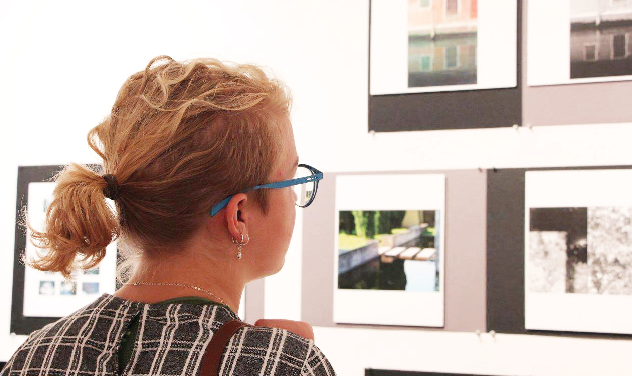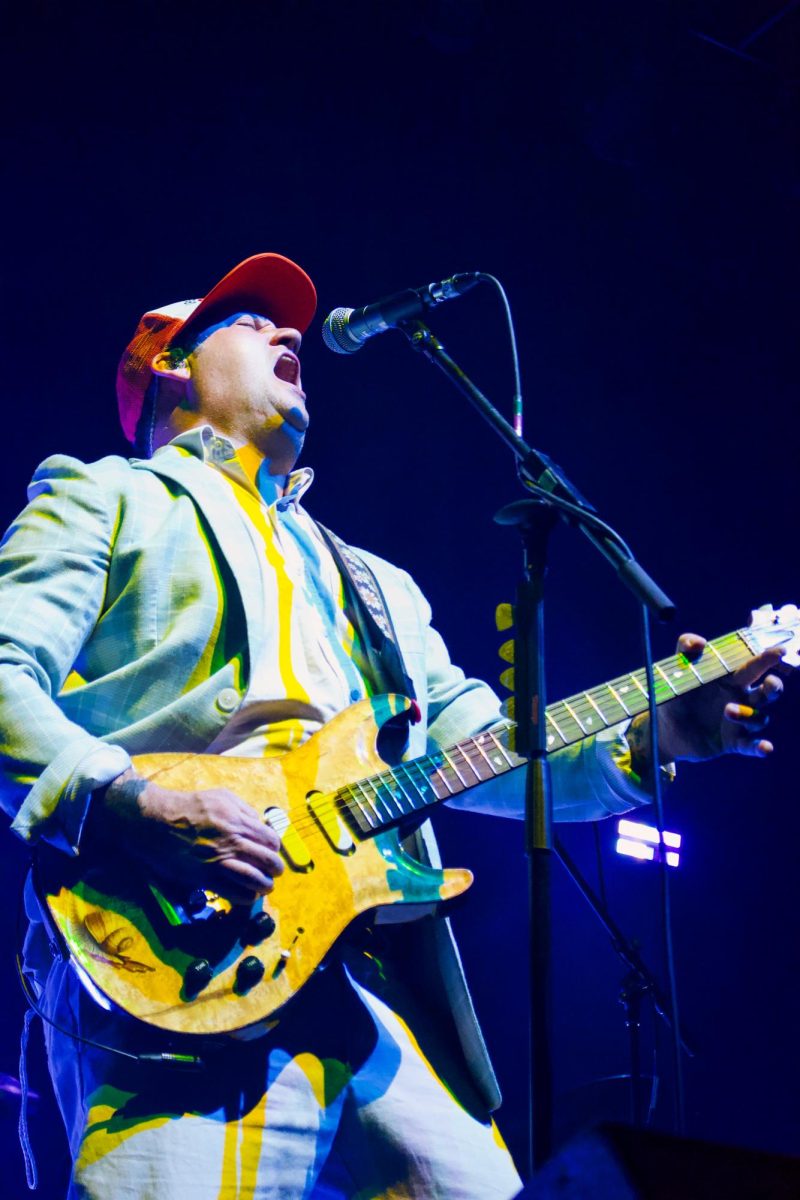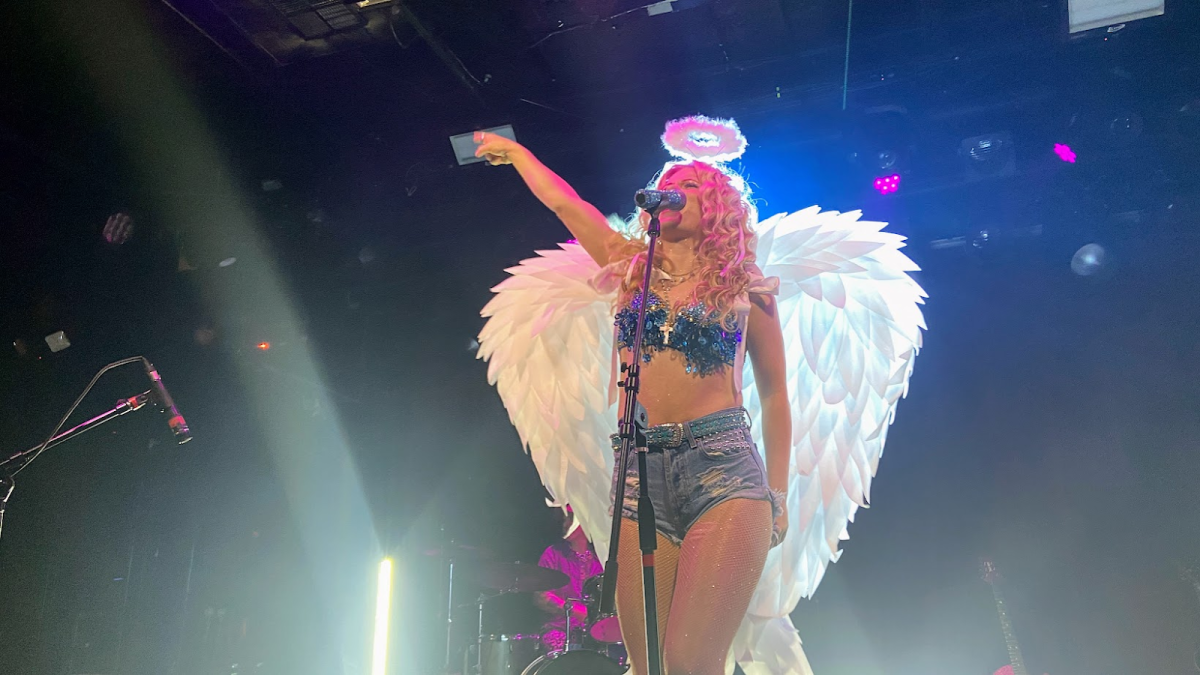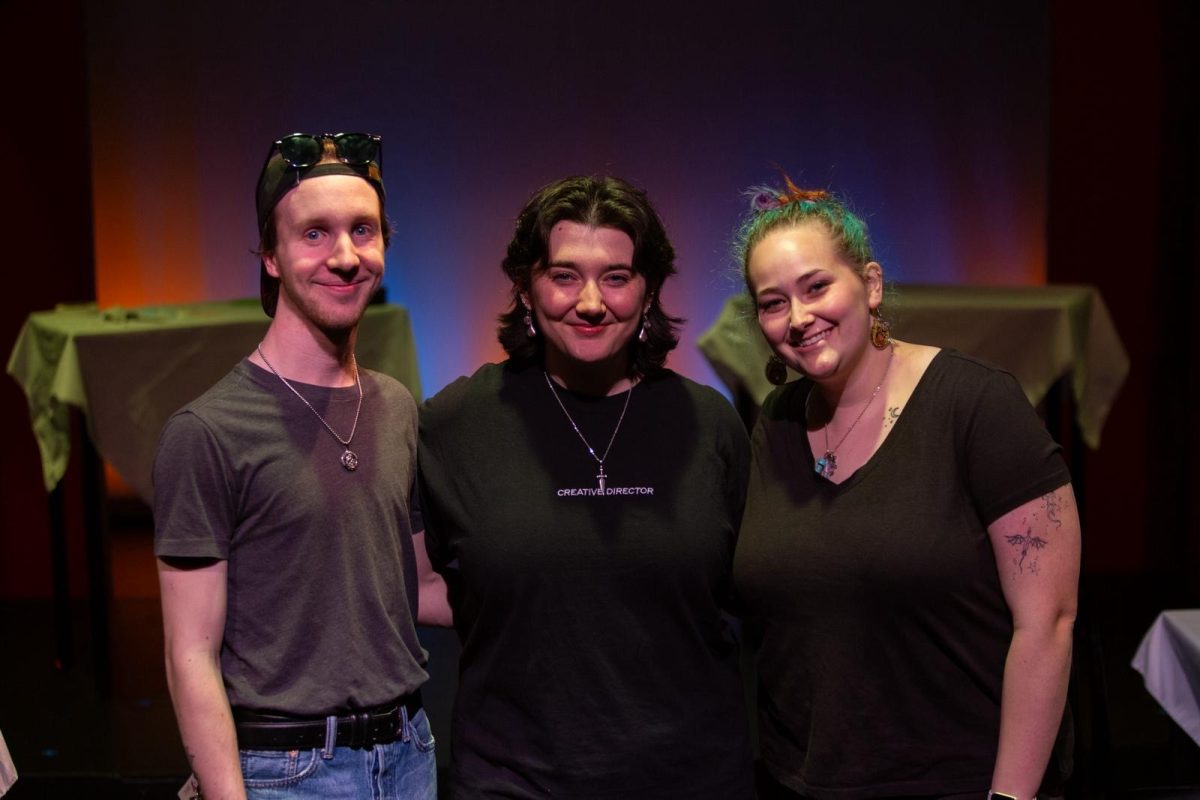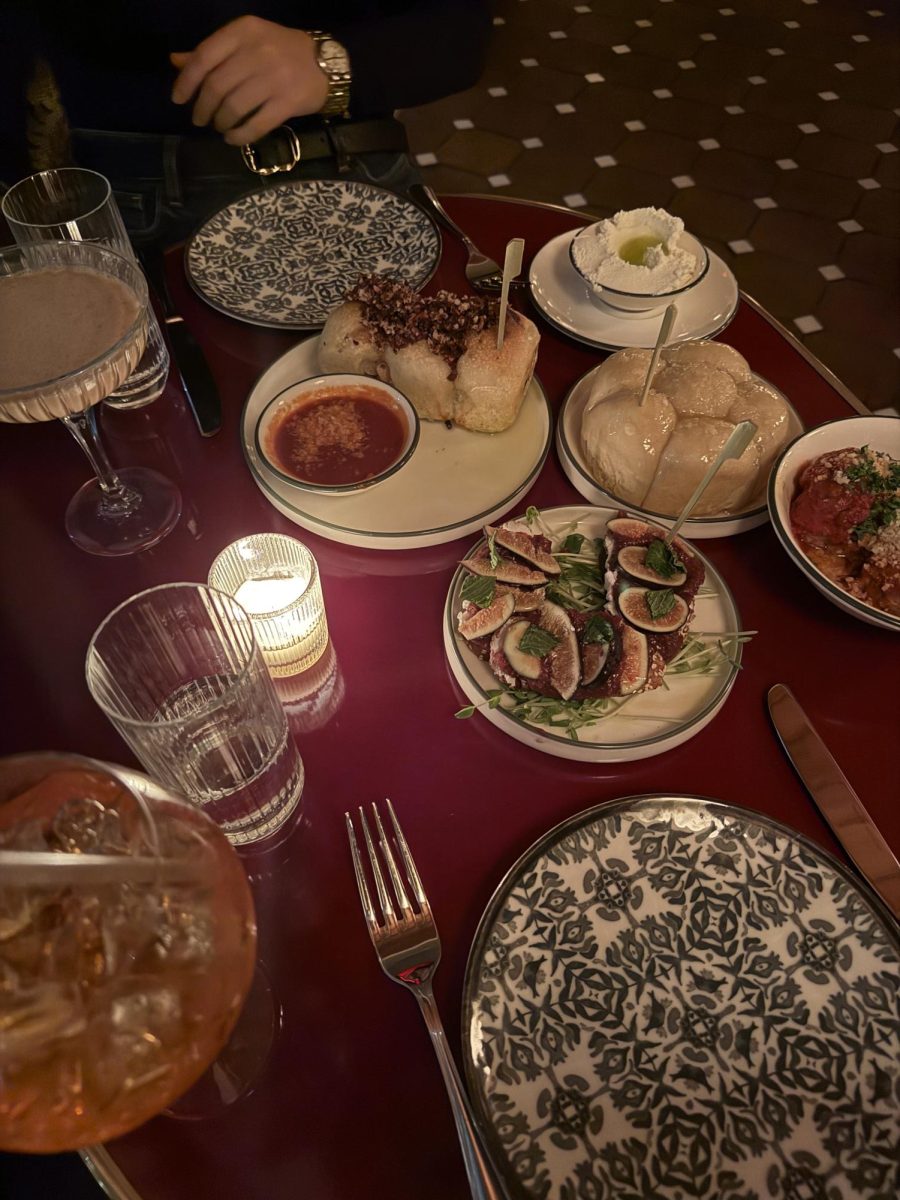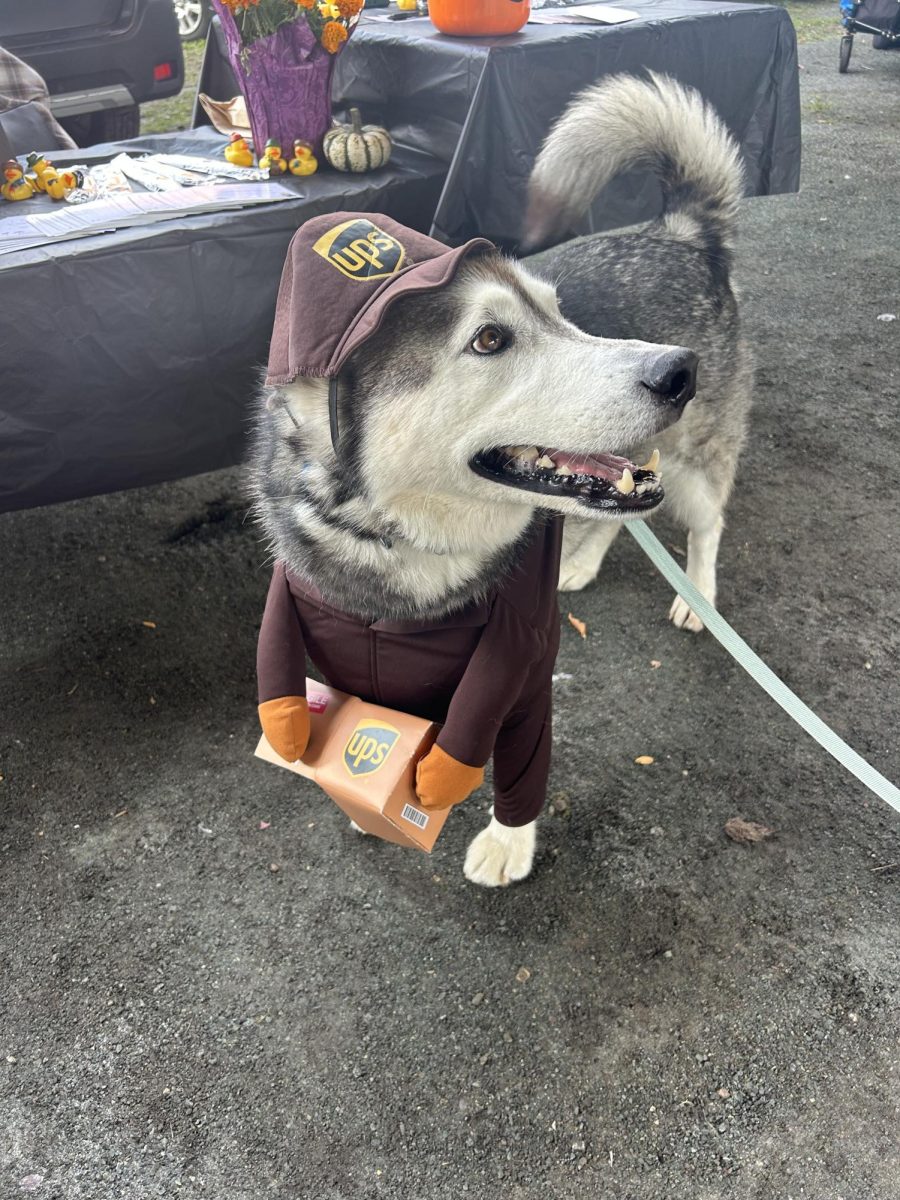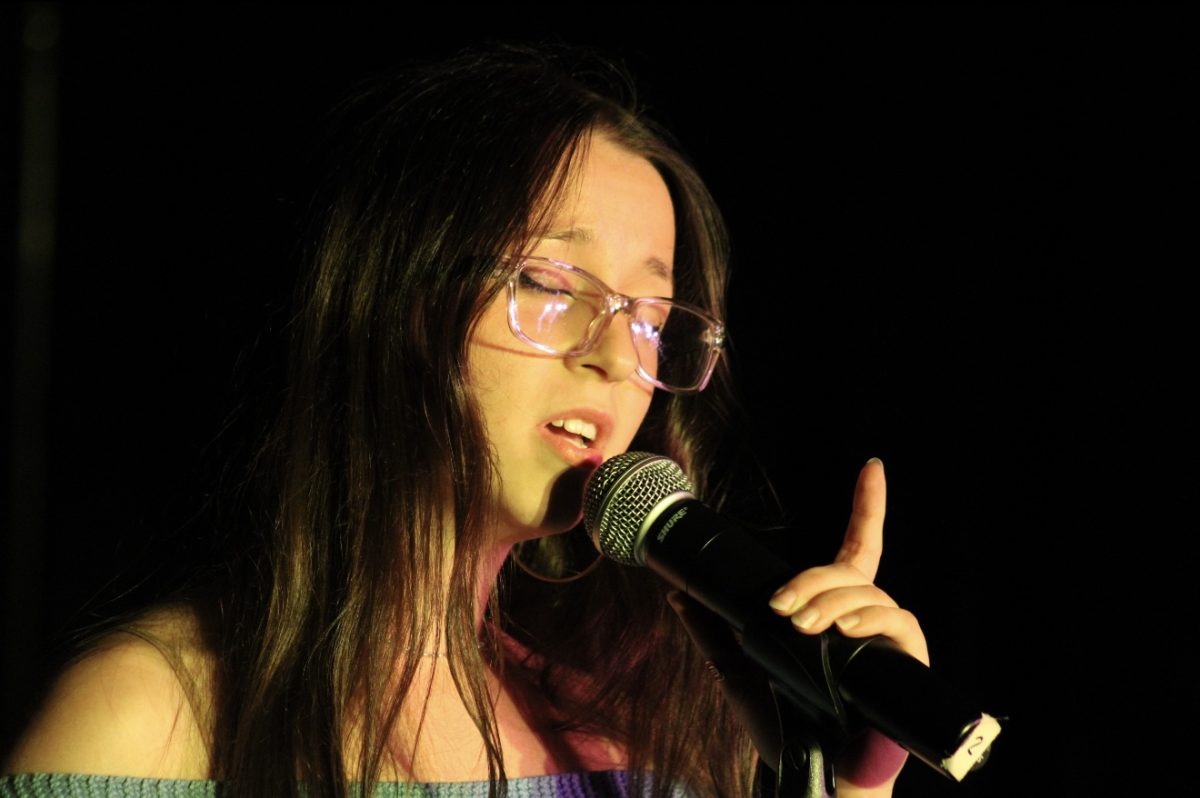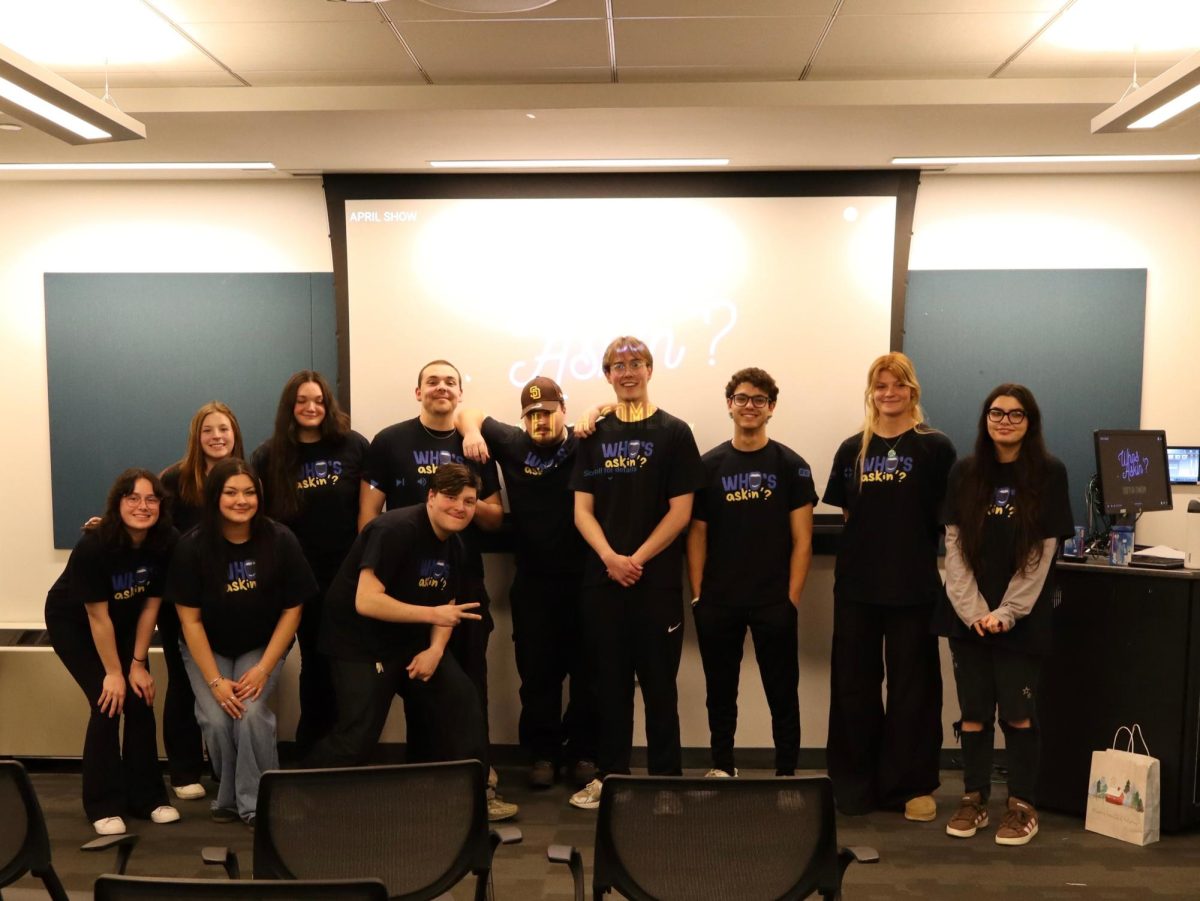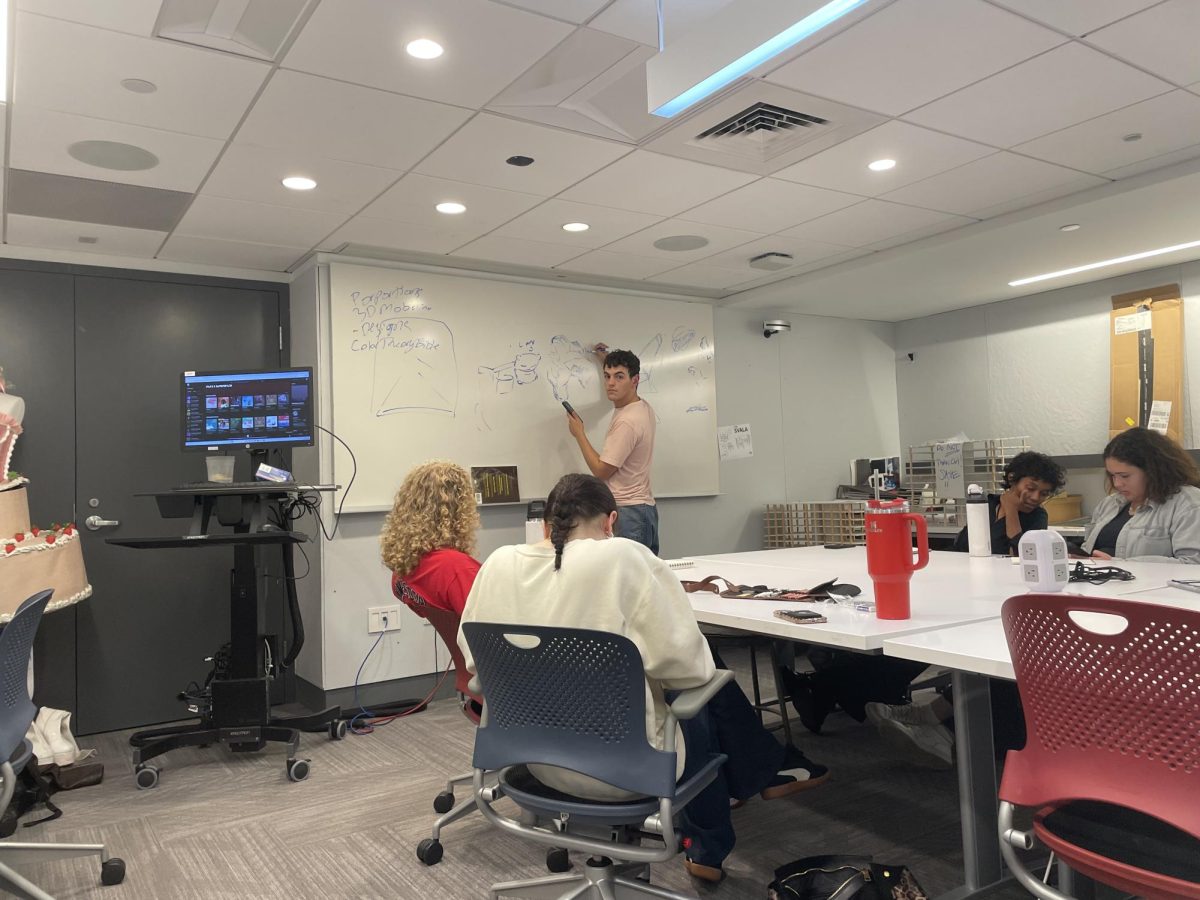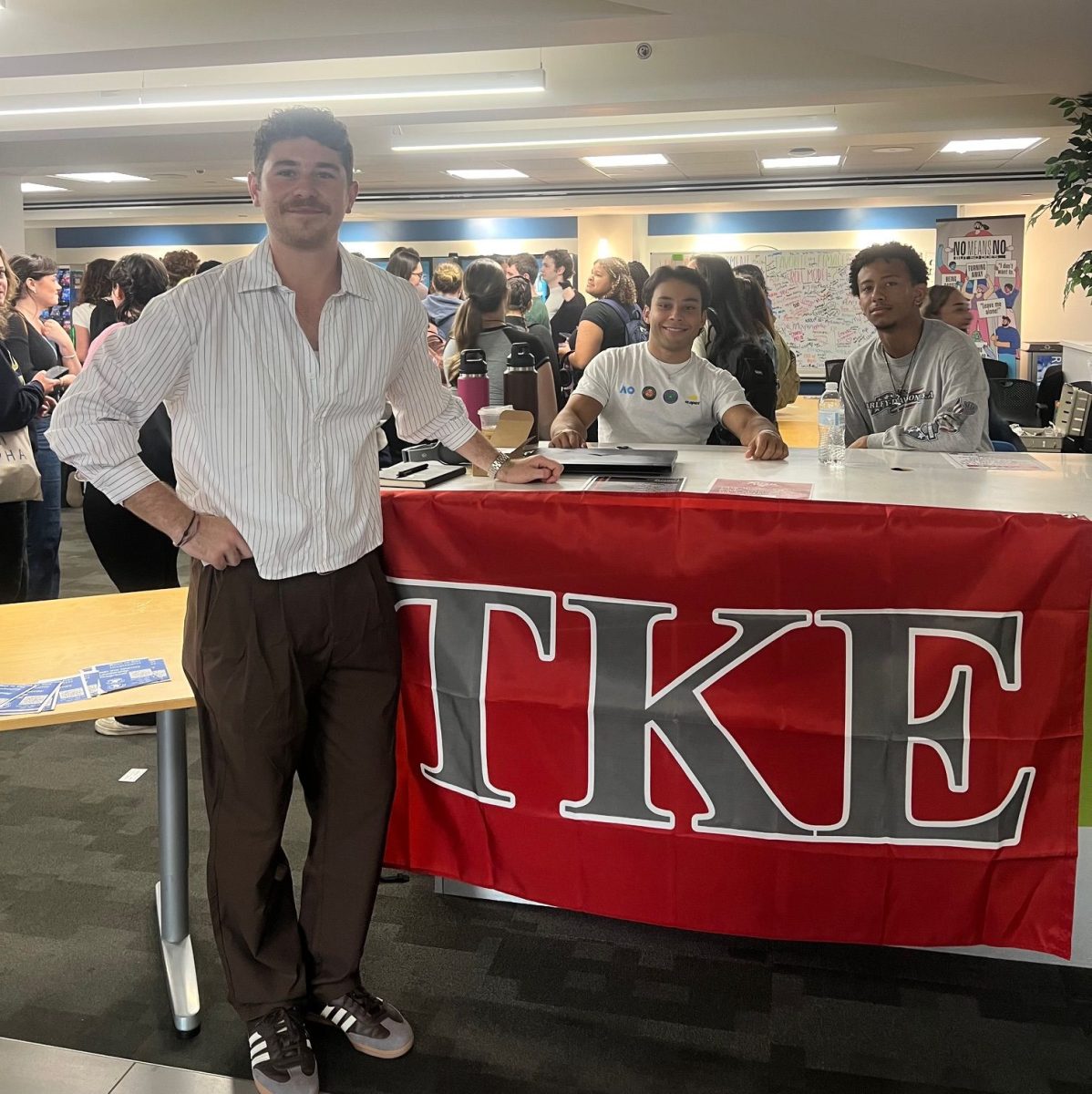Do you have something that motivates you? Creatively dubbed, “Passion Engine” is the most recent exhibit at the Suffolk University Gallery that promotes pursuing your passion. The Professors at the New England School of Art and Design (NESAD) showcased their passions and artistic disciplines, which included pieces that break away from their traditional fields.
Meticulously cut and placed, Professor Randal Thurston’s butterfly-moth exhibit fluttered in the corner of the first room of the gallery at 75 Arlington. From afar, the stark black cutouts look like familiar creatures: butterflies and moths. Up close, they appear to look like insects from a laboratory, rather than from nature. A closer look shows that it is a combination of the two insects.
On the wall-facing side of the cutout, Thurston attached colored paper that matches other colors of pieces around the room. Up close, bright oranges and greens reflect off the wall, connecting the pieces on the wall and in the center of the room.
This is what Gallery Director Deborah Davidson looks for when she curates a show.
“Color interplay between pieces can add or subtract from a piece”, she said as she circled the room.
Davidson said that the pieces have to make sense and fluidly move with one another. Color is a huge influence in that flow. Looking around the room, one can see how each piece shares similar hues.
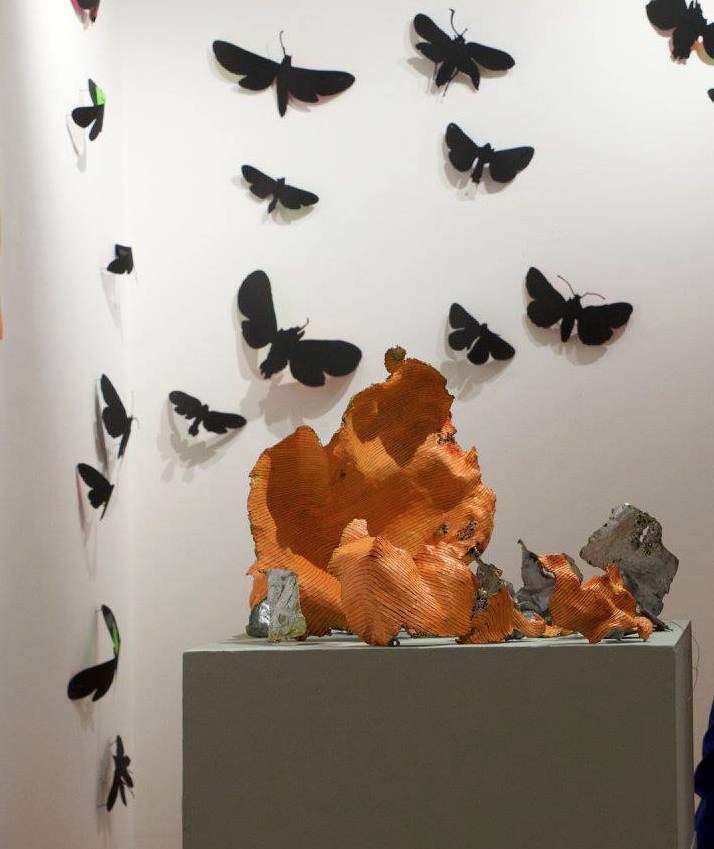
Wallace Marosek, a graphic design professor, submitted vibrant paintings of wide-open fields and old farm houses. Marosek said he finds that graphic design can be restrictive to his freedom since most of the work is client based. His escape to artistic freedom is through painting, according to Kayla Hart, the Gallery Ambassador.
Professor Rita Daly stepped out of her comfort zone by showing interest in art that uses film and video editing. Daly, co-chair of the graphic design department, filmed and edited together various clips of minutia in life. The clips are random, and there is no apparent attribution to a single person, date or time. From a close up of true green grass blowing in the wind, to a sudden transition of eggs boiling as the air bubbles dance from the bottom to up the curved side of the egg to the surface.
The clip that stands out most is an upside down, wide shot of a bustling, traffic-filled intersection that has no sound to it. The video takes a hectic situation and completely neutralizes it, rendering a traffic jam into a tranquil scene.
“She is of an older generation, yet she is experimenting with new media,” said Hart.
The exhibit allows professors to truly venture outside of their casual realms of expertise, fostering experimentation, inspiration and creation. In some instances, however, their pieces are indicative of interests they have had for some time.
Jennifer Fuchel, a graphic design professor, wanted to illustrate that terrorism has become a fact of life through her pieces by means of designing pillow covers. Professor Fuchel took her graphic design background to create a pillow cover with newspaper headlines that read “Charlie Hebdo attack: Three Days of Terror” and another “20 Children Murdered Unthinkable.”
According to Hart, “Passion Engine” is one of, if not, the most successful show NESAD has had in recent memory. It gives students a chance to see professional artists at work, which can be inspiring as much as it is exciting.
The exhibit will continue to run until Oct. 9.


